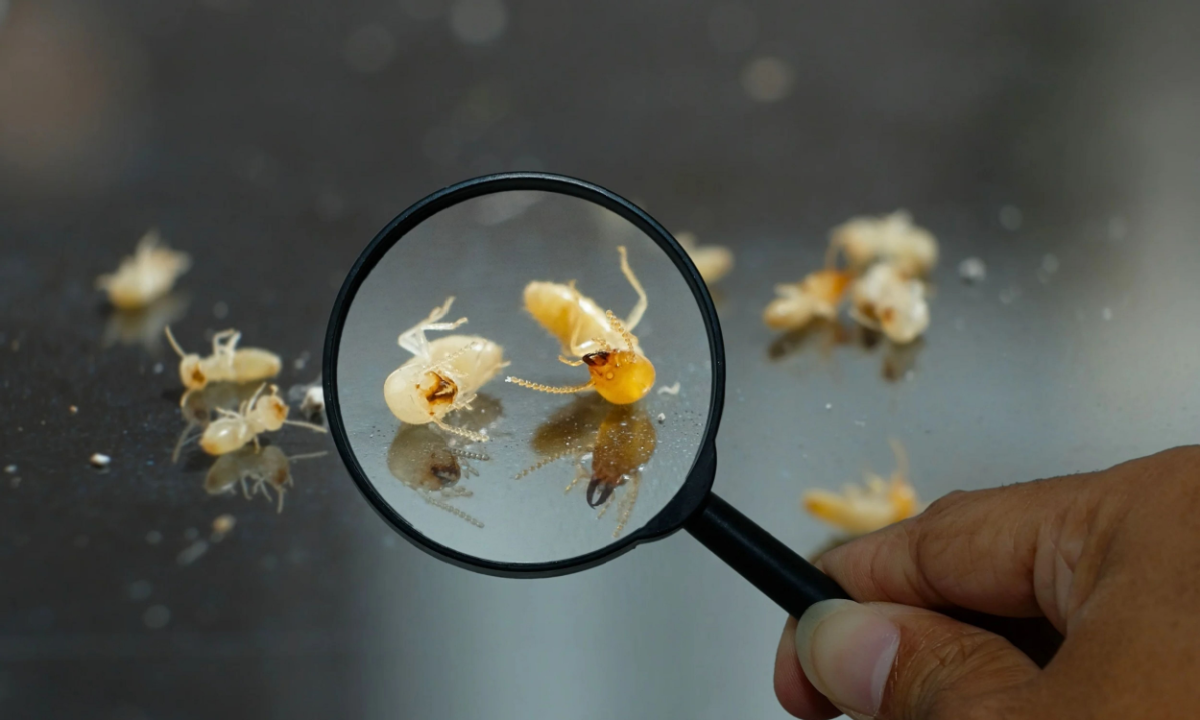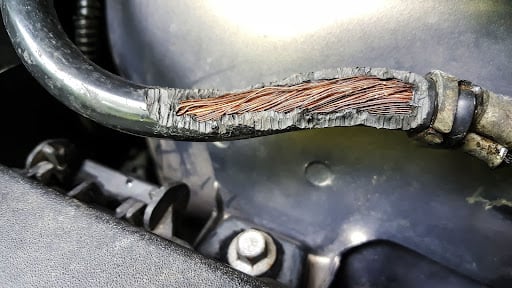Have you noticed sawdust around doors, discarded wings, or even holes in your wooden supports?
Unfortunately, the cost of termite treatment doesn’t just stop at getting rid of these pests. In many cases, termites can cause significant structural damage to your home if not properly dealt with in time.
Infestations can sometimes go unnoticed for years, as termite colonies can consume up to 5 grams of wood each day. While termiticides are certainly effective, professional treatment is always recommended.
In this article, we want to inform you of eight tell-tale signs that you might be dealing with a termite infestation.
8 Signs of a Termite Infestation
One of the most important factors in any termite treatment is how early an infestation is caugh. That’s why there are several early warning signs any homeowner should be aware of so they can plan accordingly.
Hollow/Damaged Wood
Termites mainly snack on untreated wood. So as termites burrow through wood wall studs, floor joists, and trim, they’ll leave behind tunnel-like grooves in the cellulose, often hollowing out nearly the entire board without ever emerging.
As a result, impacted wood tends to become light, weak, and hollow-sounding. If you happen to break open or crumble a piece of termite-infested wood, you’ll likely uncover these distinct grooves running along the grain.
Mud Tubes
Subterranean termites nest within the ground and require extremely specific conditions to thrive, including humidity and temperature regulation. So instead of emerging from the soil and climbing up concrete foundations to gain access to wooden structures, they construct “mud tubes” that run from the soil directly to the wooden structure, allowing the insects access to your home without ever exposing themselves to the elements.
These tubes are just thin enough to run along any concrete structure and allow termites to travel undetected.
Buckling Flooring
Is your hardwood flooring buckling or blistering? This is likely a sign of termite damage below the surface. Termites are attracted to softwood, such as subfloor and floor joists. Unfortunately, damage can be costly to repair, especially if the infestation has gone on long enough to note considerably buckled and warped flooring.
Stuck/Rubbing Windows and Doors
As termites burrow through the cellulose of wooden headers, studs, and support beams, the wood is weakened and, therefore, tends to buckle and bend. As a result, once well-functioning windows and doors may begin to rub, stick, or sag.
Swarmers
At certain times of the year, male swarmers (winged termites) are on the hunt for mates and can be observed flying erratically in massive groups around affected areas. Therefore, if you note a swarm in or around your home, you can be almost certain that a well-established colony is hiding nearby.
Discarded Wings
In a rather gruesome series of events, swarmers tend to twist off and discard their wings after settling at a new location to build a colony. As a result, you may notice discarded wings on window sills, outside doors, or near other potential entry points to your home.
Termite Droppings
As termites gnaw through cellulose, they produce mounds of drywood droppings that must be expelled from their newly-formed tunnels. To do so, they create pinholes in the wood where they kick out the excreted pellets, leaving small mounds resembling sawdust or coffee grounds.
Bubbling Wallpaper/Drywall Damage
Termites consume cellulose as their only food source, which is also found in paper and cardboard. So what’s on the back of drywall? Paper! Termites have been known to consume the backsides of drywall and often leave small exit tunnels in the surface, marked by dark specs.
 Tips to Prevent Re-infestations
Tips to Prevent Re-infestations
Being the stubborn pests that they are, you may assume that you’ve tackled a termite infestation, only to find that more damage has ensued or a new colony has settled in the following months. For this reason, following these critical tips is essential to best protect your home against re-infestation.
Keep Food Sources Out of Reach
Since termites are attracted to cellulose, keeping potential food sources away from your property is important. Outdoors, this means keeping firewood elevated on metal or composite racks and keeping these racks 6 inches from your home at a minimum. Trimmed tree branches should also be placed far away from structures to prevent termites from spreading.
Indoors, try ridding your home of any unnecessary cellulose, such as empty cardboard boxes, old stacks of paper, or scrap wood in basements and garages.
Keep a Well Kempt Yard
Certain species of termites don’t nest underground; instead, they reside under foliage, logs, felled trees, and other organic structures. To prevent termites from settling in your yard, trim trees, and bushes and remove old logs, stumps, and organic debris.
Cut Down on the Mulch
Mulch is a staple of DIY landscapers, adding freshness to planters and dirt areas. However, the mixture of decomposing wood and moisture makes for an ideal termite snack. For this reason, it’s best to limit mulch usage or opt for reclaimed rubber mulch.
Have Yearly Inspections
Though all of the aforementioned tips are useful, there’s no better trick to preventing re-infestations than being vigilant. Conducting routine inspections can mean the difference between a minor infestation and serious structural damage to your property.
Professional Termite Control Services
Some things are better left to the professionals, and termites are one such problem. Due to the nature of termite infestations, the potential danger to your property, and the sheer size of most colonies, it’s important to have termite issues handled by trained pest experts, such as your trusted local professionals at Anchor Pest Control.
Experts can conduct a variety of treatments to rid your home of an infestation, such as:
- Fumigation
- Chemical barriers
- Physical barriers
- Termiticide applications
- Bait traps
- Underground bait stations
- Moisture removal
Every infestation brings a new set of challenges due to the extent of the infestation, the type of infestation, the location of the infestation, and your home’s unique construction type. As such, the first step to any treatment is a termite inspection.
Overall, it’s best to leave termite treatments to professionals trained to handle them, ensuring the greatest chance of success against an infestation.
Termite infestations are no joke and should be treated as such. At the first inclination of termite presence in your home, it’s best to reach out to a trained professional to assess the infestation and recommend a treatment plan.
Additionally, there are several ways to proactively reduce the risk of an infestation, including limiting food sources, removing excess water, removing hiding places throughout your yard, and having routine inspections. For termite advice or any other inquiries, contact Anchor Pest Control at (732) 636-8761.
Quick Q&A Recap
How much wood can termites consume in a day?
On average, a colony of 60,000 to 1 million termites can pack away 5 grams of cellulose in a day; that’s 4 lbs per year! With that much destruction, termites can cause serious structural damage to floor joists, wall studs, header boards, and other wooden structures.
Why are termite infestations best left handled by a professional?
Termites are sneaky pests, often going years unnoticed while they wreak serious havoc on wooden structures. In addition, termites are difficult and time-consuming to treat, even with professional assistance. So while DIY treatments may impact termite populations, you likely won’t have luck wiping out the colony.
What are Swarmers?
Swarmers are winged termites, most commonly of the subterranean variety. These insects emerge from their nest in mass quantities to search for mates and locations to build up a new colony. Only found during certain times of the year, these termites tend to settle towards windows, doors, and other potential entry points of your home.



